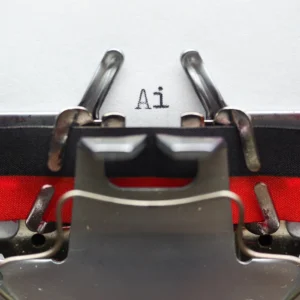Technical writing occupies a central position in engineering, customer post-sale experience and service. Yet it’s one area often overlooked as companies explore new ways to leverage AI and keep pace with their competitors.
A Grounded Approach to Technical Writing and Innovation
It’s more important now than ever that industries, companies and finally the designated professionals tasked with the burden of writing, hold the art of language close and treat it with care. High-quality writing shouldn’t be reserved for art and poetry—we desperately need to see its applications in the everyday content we consume, especially in technical areas, like owner’s information and diagnostic tools.
In a world where focus on the written word is being increasingly overshadowed by a focus on new types of short-form media, the nuances that go into crafting a clear and compelling piece of content can’t be overlooked. Engineers and technicians are essential, but the task of translating their work into something usable and understandable belongs to skilled communicators. And no, not even AI can do that job alone.
We asked Gary Ragland, Tweddle Group’s Manager of Copywriting and AI Content Strategy, for his take.
“Human writers aren’t being replaced, they’re being amplified,” said Gary. “When paired with experienced writers, AI can be viewed more as a powerful assistant than as a replacement.”
"Human writers aren’t being replaced, they’re being amplified,” says Ragland. “When paired with experienced writers, AI becomes a powerful assistant, not a replacement."
The Unsung Heroes of Technical Writing
In the scope of service and owner’s information and other technical documentation, where engineers and technicians prevail, the unique skills of a designated writer, educated and trained in the craft of language, are crucial.
In industries with high-stakes products, like advanced vehicle systems or intricate software platforms, precision is non-negotiable. Enter technical writers. They’re the behind-the-scenes experts that get critical information into the hands and minds of end-users, creating the connective tissue between the product and the person using it. Technical expertise is necessary here—but so is writing expertise.

Often lost to the wayside in the automotive, aerospace and manufacturing landscape, the traditional “creative” background that accompanies many of these writers is in fact the very asset that can make your information effective, dynamic, and ultimately, award-winning.
Writers trained in language, storytelling and communication bring something special to the table. They know how to guide a reader, and they know how to make even the most complex concepts approachable. These are professionals who’ve spent years honing the craft of clear expression. And that craft is exactly what technical communication needs.
A writer with a creative edge is often one who has had a love of language for years. They’re not just reporting information; they’re designing understanding. These professionals can be one of the most powerful tools at the disposal of technical documentation teams.
The big question, then: What is good writing? In artistic applications, of course, that’s totally subjective. In technical applications, there are some more obvious guideposts we can pay attention to. Even there, though, the “rules” of language are always changing, and even when they’re not, they’re made to be bent and challenged. Great writing pays attention to all of this and respects the weight of words, keeping a finger on the pulse of the craft. To put it simply, good writers care.
Technical writing with a creative edge does more than report information. Done right, it designs understanding. Writers with this skill are powerful tools for a technical documentation team.
Leveraging Tech and Talent
We’re not here to explore the moral rights and wrongs of AI and machine learning, its tremendous benefits and eerie dangers. The question at hand is simple: Can AI take on the task of writing, so that humans need never lift a pen again?
The argument could be made that students and professionals would be remiss not to take full advantage of the tools which are so readily at their disposal, especially when that’s what their peers—and even their superiors—are doing. So, are we poised to be the last generation of skilled writers?
The task of creating long-form written content for owner’s manuals and other technical guides is a mighty undertaking. Content curated specifically for humans is best written by—you guessed it—humans.
According to recent research, AI often produces repetitive or redundant phrases, especially in longer pieces of writing. Unnecessary repetitions or circular phrasing are common because the model relies on previously generated phrases without considering the flow of the entire piece. When every word counts, this can be detrimental to facilitating understanding.
“AI can’t replace subject matter expertise, empathy or editorial instinct,” Gary said. “What it can do is enhance workflows, accelerate first drafts, and support consistency.”
AI even “hallucinates” information, making up details that are factually incorrect or entirely fabricated. According to research from Google Brain, systems like GPT-3 and GPT-4 may produce content that seems plausible but is entirely incorrect. A study found that about 20% of the responses generated by these models contained hallucinated or false information, especially in topics requiring detailed knowledge or expertise.

The Power of People
Language unites us as a society. When we fail to give it the appropriate attention, we step onto a slippery slope where communication and understanding begin to erode. At the same time, it would be foolish to ignore or turn away from the vast benefits offered by AI.
Explore how AI might streamline your processes. Continue to trust the expertise of your technicians and engineers. But when it comes to relaying your most crucial asset—your technical information—don’t underestimate the power of your writers. Learn to make the most of AI by amplifying the intelligence and efficiency of the writers who know your products best.
Humans create reality, and writers sculpt that reality into a format that facilitates understanding. Where your technical documentation is concerned, understanding is more than necessary—it’s a competitive advantage.



